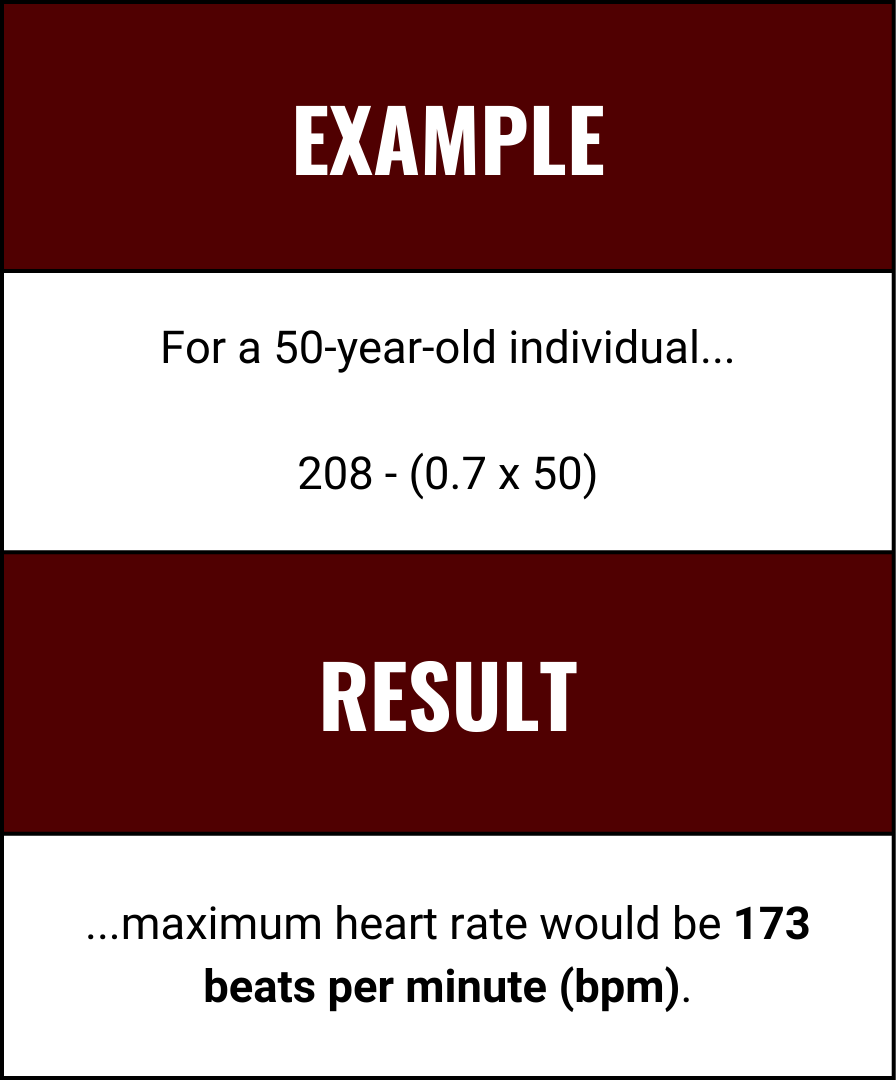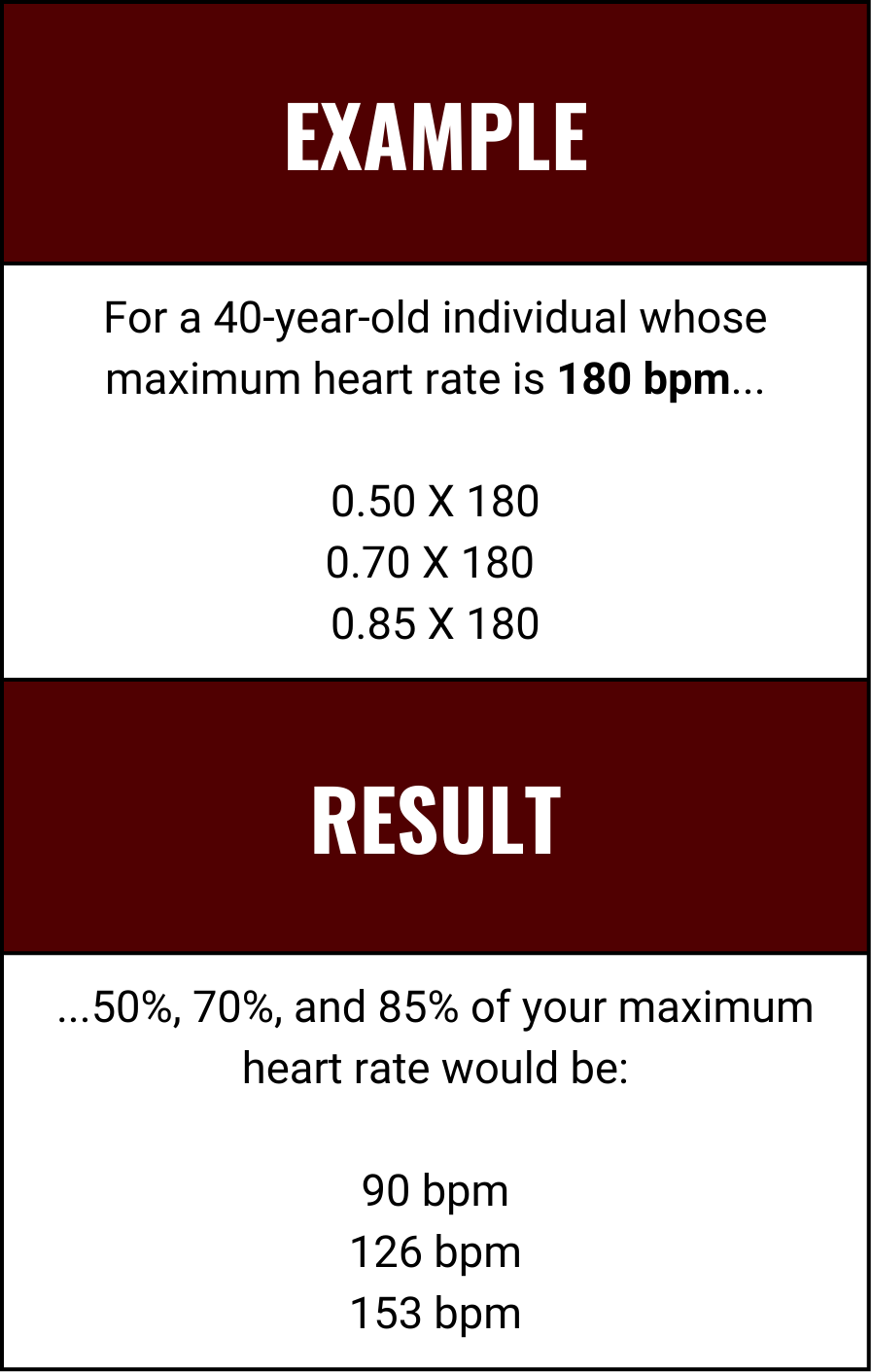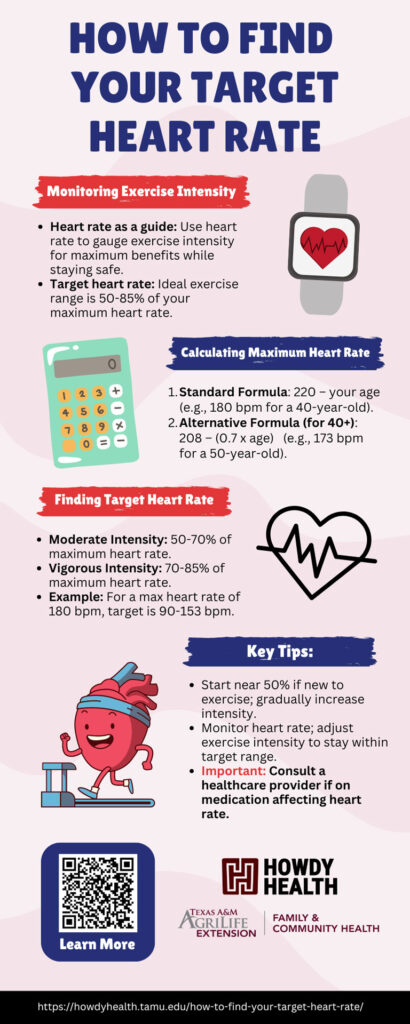You’re exercising – that’s fantastic! But are you exercising at a rate that benefits you the most?
By monitoring your heart rate, you can assess your exercise intensity and how hard your heart is working. Since working at a moderate to vigorous intensity offers the most benefits, we want to be able to exercise in a range that gives us the most benefit while still being safe.* This range of intensity is known as your target heart rate, which is 50-85% of your maximum safe heart rate.1
Give it a try! To find your target heart rate, you must first find your maximum heart rate, the greatest number of beats your heart can beat in one minute.
Maximum heart rate
Here are two maximum heart rate formulas from which to choose:
- Maximum heart rate is typically calculated based on your age subtracted from 220:
- 220 – your age
- For a 40-year-old individual, maximum heart rate would be 180 beats per minute (bpm).


2. Some research suggests that the traditional equation may underestimate maximum heart rate past age 40 years.2 For individuals older than 40, you may opt to use the following formula:
- 208 – (0.7 x age)
- For a 50-year-old individual, using this equation, maximum heart rate would be 173 beats per minute.


Regardless of which formula you choose, always pay attention to how you feel and keep in mind that maximum heart rate varies by individual.3
Target heart rate
To find your target heart rate, simply multiply your maximum heart rate by the percentage for which you are aiming.
- Moderate intensity is 50-70% of your maximum heart rate
- Vigorous activity is 70-85% of your maximum heart rate.
For example, if your maximum heart rate is 180 bpm, then 50%, 70%, and 85% of your maximum heart rate would be as follows:
- 0.50 X 180 = 90 bpm
- 0.70 X 180 = 126 bpm
- 0.85 X 180 = 153 bpm
So, in our example of a 40-year-old individual, your target heart rate would be between 90 – 153 beats per minute.


Regardless of which formula you choose, always pay attention to how you feel and keep in
If you’re just starting your fitness journey or getting back to it after a time off, you’ll want to initially stay closer to 50% of your target heart rate, building up to a more vigorous rate. You can stop a moment and find your pulse or use a heart rate monitor to assess your heart rate. If your heart rate is too high (above 85%), slow it down a bit until you’re in the target range. If your heart rate is low (below 50%), you may want to push yourself to work a little harder. As you become more active, you can build up to being able to comfortably exercise closer to 85% of your target heart rate.3
*Important Note: Some drugs and medications affect heart rate, meaning you may have a lower maximum heart rate and target heart rate zone. If you have a heart condition or take medication, ask your healthcare provider what your target heart rate should be.3
Need some motivation, comradery, support, or accountability on your fitness journey? Join one of our free fitness programs.
References
- Understanding your target heart rate. Johns Hopkins Medicine. November 3, 2021. Accessed August 12, 2024. https://www.hopkinsmedicine.org/health/wellness-and-prevention/understanding-your-target-heart-rate.
- Tanaka H., Monahan K.D., Seals D.R. (2001). Age-predicted maximal heart rate revisited. Journal of the American College of Cardiology, 37(1):153-6. DOI:10.1016/s0735-1097(00)01054-8
- American Heart Association. Know your target heart rates for exercise, losing weight and health. January 4, 2015. https://www.heart.org/en/healthy-living/fitness/fitness-basics/target-heart-rates
Infographic
Download the PDF or share the image below to help others learn more about how to find their target heart rate.





